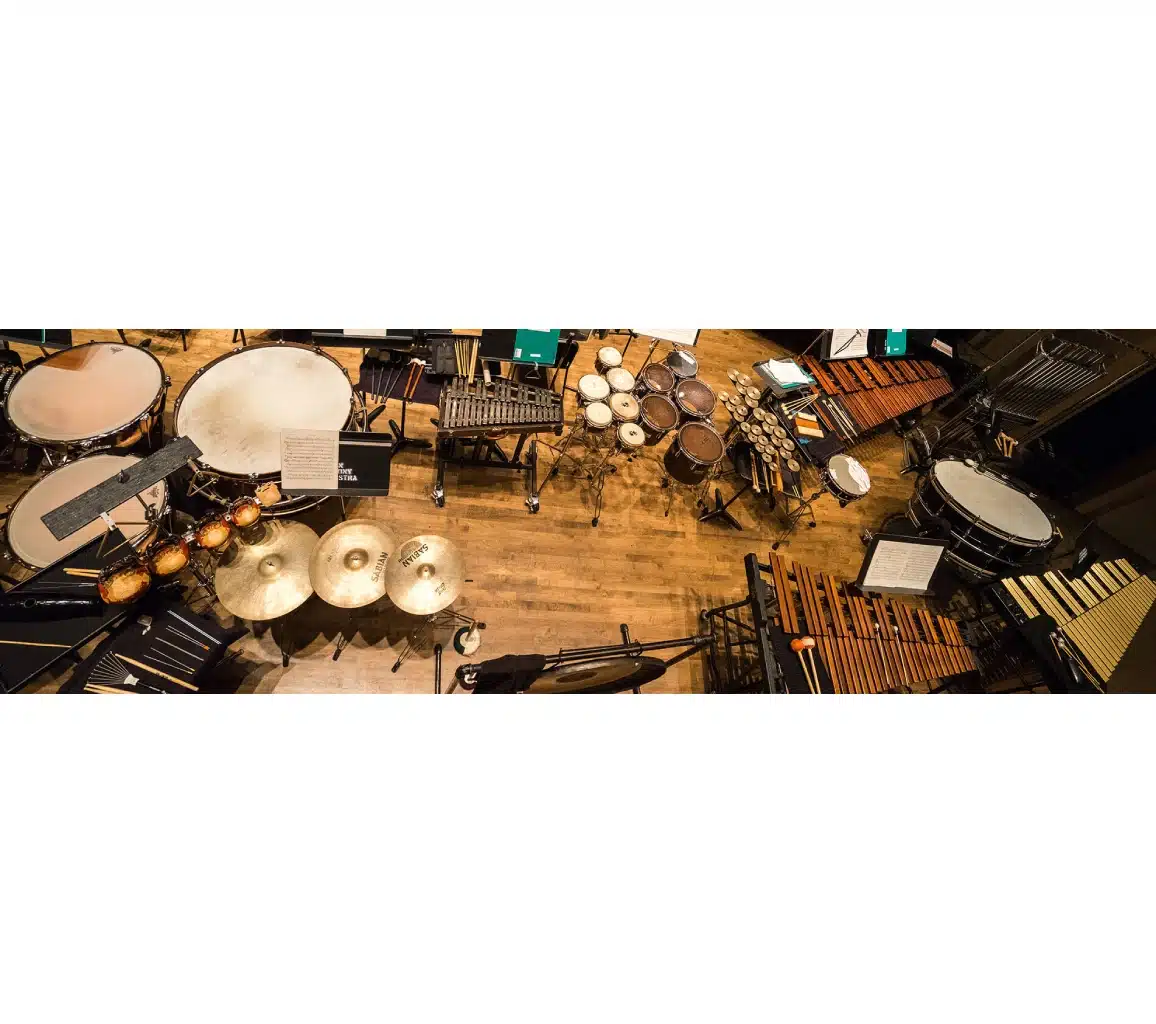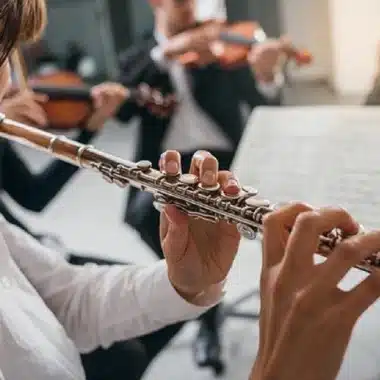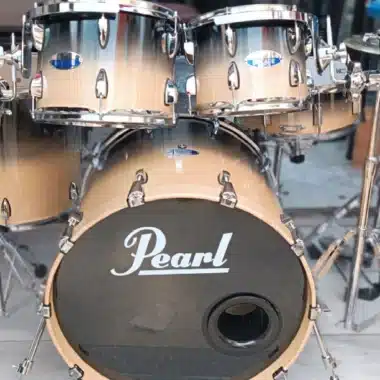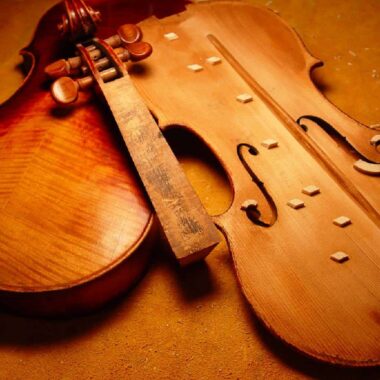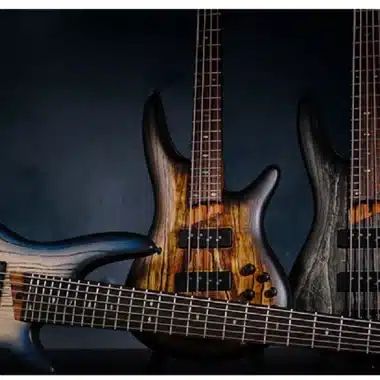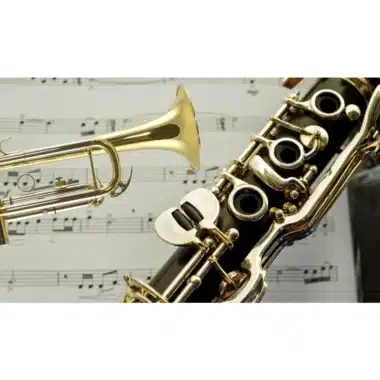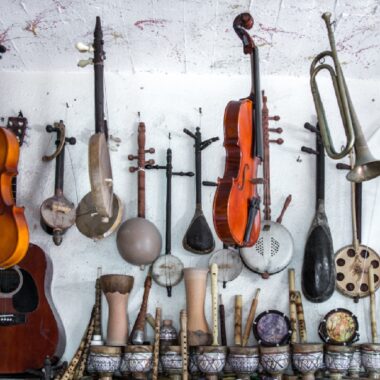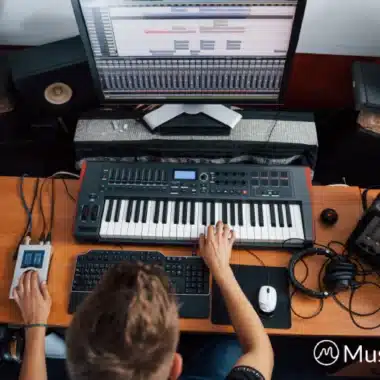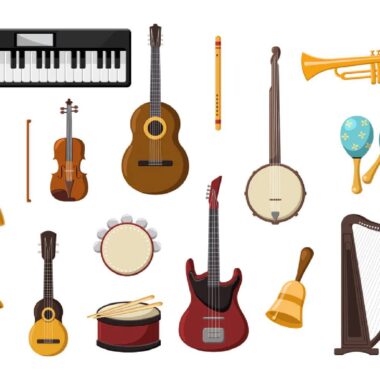The World of Percussion Instruments: A Journey Through Rhythm and Culture
Percussion instruments have long been celebrated for their essential role in music across cultures and time periods. From the rhythmic heartbeats of ancient civilizations to the vibrant sounds of contemporary genres, these instruments are a testament to humanity’s innate desire to create and connect through rhythm. Defined by their method of sound production—achieved by striking, shaking, or scraping—percussion instruments encompass a diverse array of musical tools that evoke powerful emotions and drive the pulse of any musical ensemble.
The rich tapestry of percussion instruments includes both tuned and untuned varieties. Tuned instruments, such as marimbas and xylophones, provide melodic capabilities, allowing musicians to play harmonies and melodies. Untuned percussion, like drums and cymbals, is primarily focused on rhythm, creating the backbone of musical compositions. This duality makes percussion integral to almost every musical genre, from rock and jazz to folk and classical music.
The historical context of percussion instruments is equally fascinating. They have been utilized in rituals, celebrations, and social gatherings, serving as a means of communication and expression throughout history. As societies evolved, so did their musical instruments, leading to innovations that expanded the boundaries of rhythm and sound.
Today, percussion instruments remain vital in contemporary music, with advancements in technology giving rise to new styles and hybrid instruments. Whether in a bustling orchestra, an intimate jazz club, or a lively dance floor, the presence of percussion adds depth and energy, bringing people together through the universal language of rhythm. As we delve deeper into the world of percussion, we will explore its various forms, cultural significance, and the craftsmanship that continues to shape its evolution.
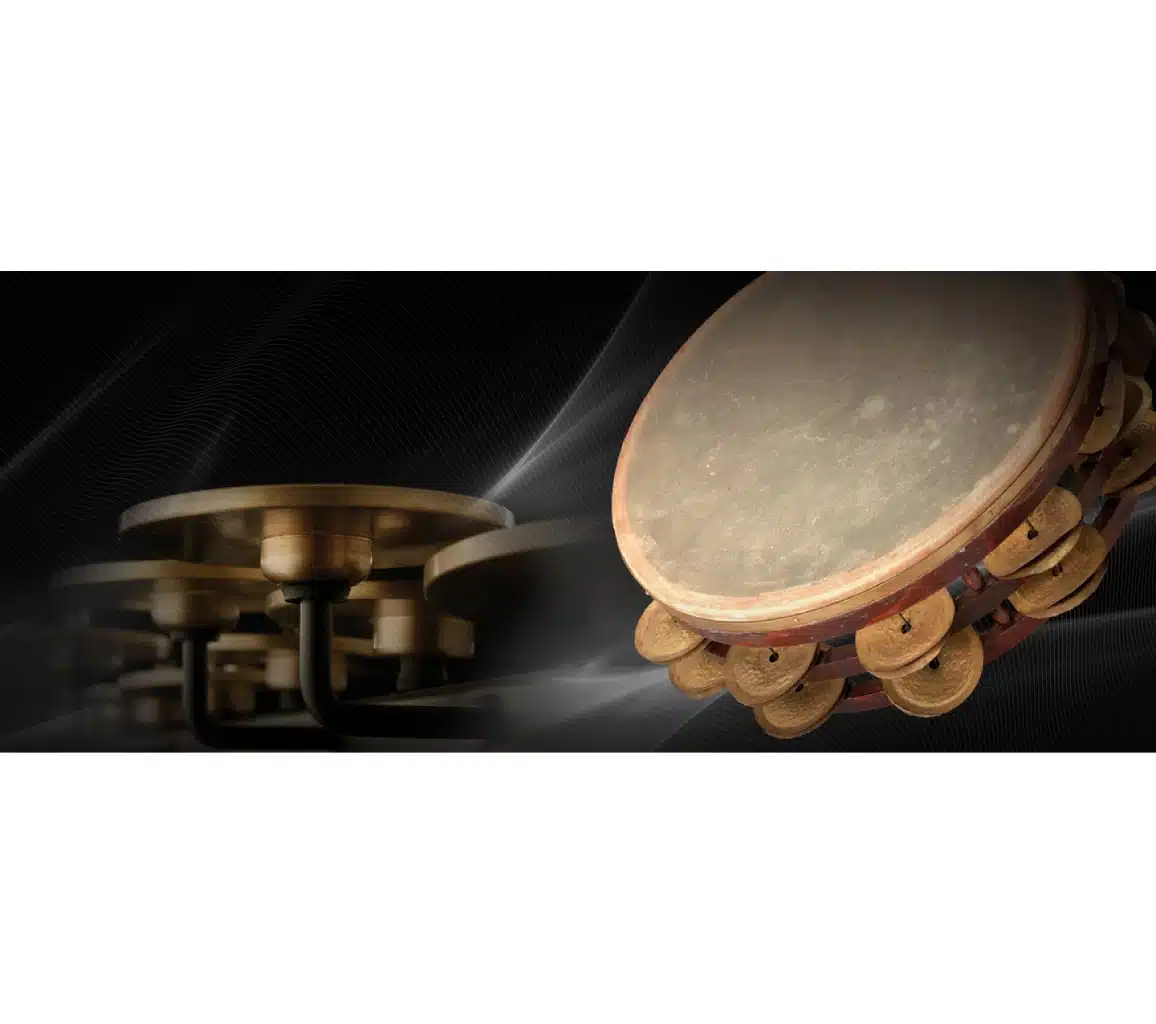
Introduction
Percussion instruments are a cornerstone of music, weaving rhythm and energy into compositions across genres and cultures. These instruments, which produce sound through striking, shaking, or scraping, are among the oldest forms of musical expression. Whether it’s the steady beat of a drum, the shimmering sound of cymbals, or the melodic tones of a marimba, percussion instruments form the foundation of rhythm in music, bringing depth and dynamic power to both traditional and modern settings.
The diversity within percussion instruments is immense, encompassing everything from simple hand-held shakers to elaborate drum kits and intricate mallet instruments. They are broadly classified into tuned and untuned categories—each with a unique function in music. Tuned percussion, like xylophones and glockenspiels, produces specific pitches that allow musicians to play melodies and harmonies, while untuned percussion, like bass drums and tambourines, primarily drives the rhythm.
Throughout history, percussion has held a deep cultural and social significance, often playing central roles in rituals, ceremonies, and storytelling. Ancient communities used drums and other percussion tools to communicate, celebrate, and connect with the divine, reflecting percussion’s timeless ability to bring people together. As music evolved, so did percussion, adapting to new styles and genres while retaining its essential role.
1. Understanding Percussion Instruments
Percussion instruments are central to music’s foundation, adding rhythm, structure, and texture across various genres and traditions. Defined by their unique method of sound production—through striking, shaking, or scraping—these instruments are often referred to as the “heartbeat” of music, driving its tempo and dynamics. From traditional drums to complex orchestral setups, percussion instruments encompass a wide range of sounds, techniques, and purposes.
One key feature that distinguishes percussion instruments is the diversity in how they produce sound. Broadly, they can be divided into tuned and untuned instruments, each serving distinct roles in musical compositions.
- Tuned Percussion Instruments: These are capable of producing specific pitches and notes, allowing musicians to create melodies and harmonies. Instruments like the xylophone, marimba, vibraphone, and glockenspiel fall under this category. Tuned percussion instruments often have bars or plates arranged similarly to a piano keyboard, which makes playing scales, melodies, and chords possible. In orchestras, these instruments add melodic elements while blending with other sections, offering a harmonious layer of sound that complements the composition.
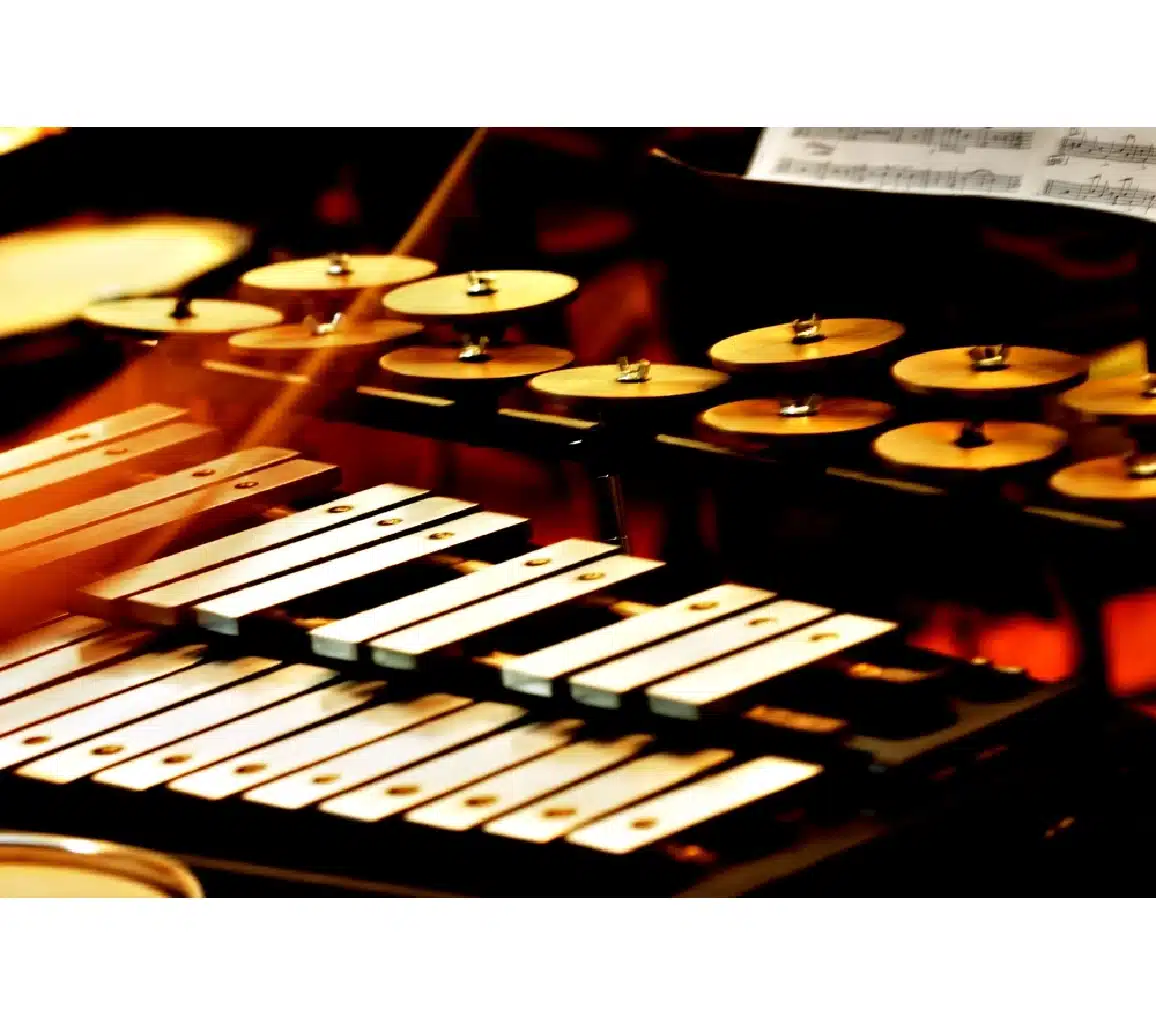 Untuned Percussion Instruments: In contrast, untuned percussion instruments do not produce a specific pitch and are typically used for rhythm. This category includes drums, cymbals, tambourines, and shakers, which play a crucial role in keeping time and driving the rhythm. While they lack melody, untuned percussion adds depth and energy, guiding the tempo and accentuating key moments in music.
Untuned Percussion Instruments: In contrast, untuned percussion instruments do not produce a specific pitch and are typically used for rhythm. This category includes drums, cymbals, tambourines, and shakers, which play a crucial role in keeping time and driving the rhythm. While they lack melody, untuned percussion adds depth and energy, guiding the tempo and accentuating key moments in music.
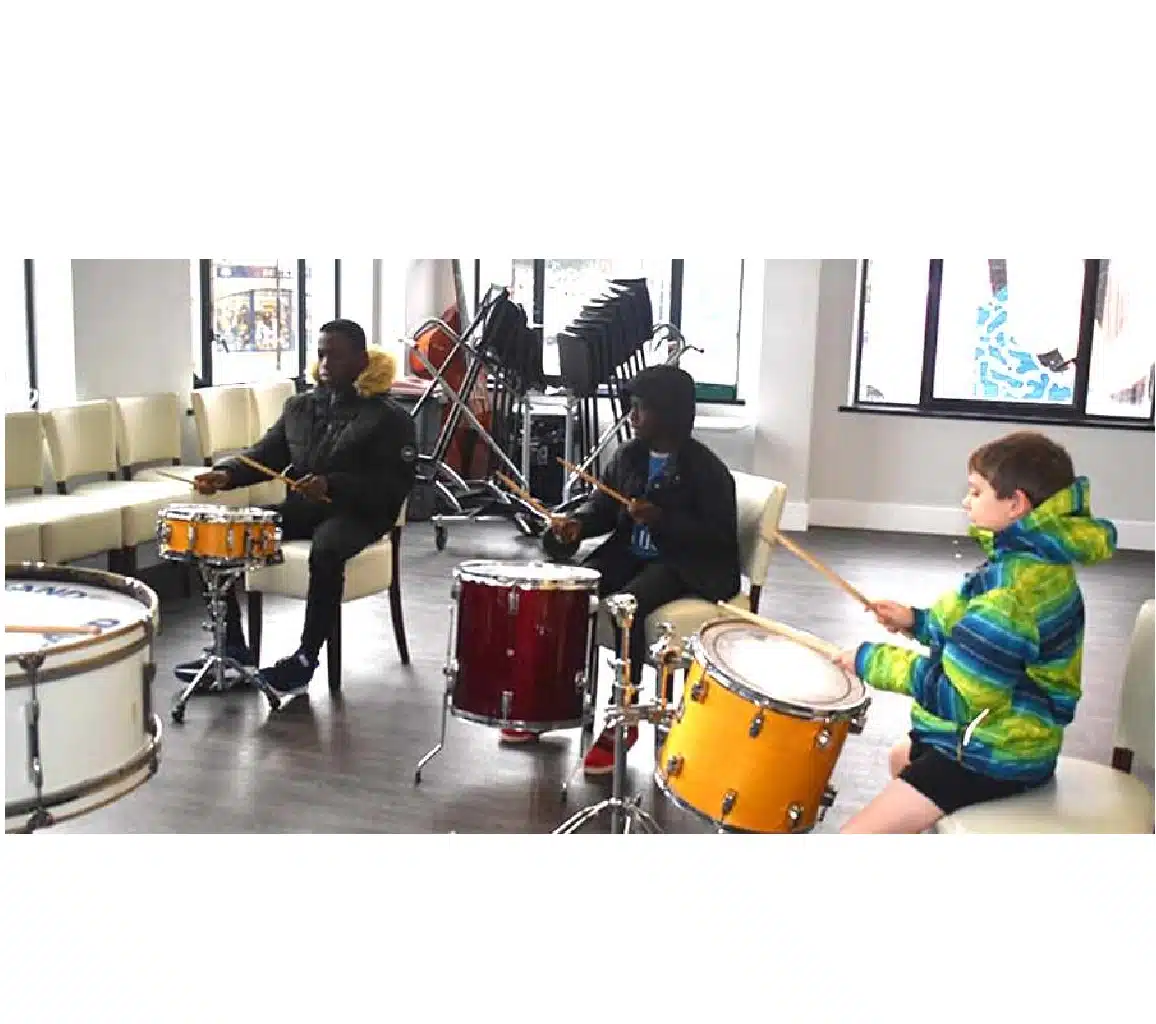
Another way to classify percussion is by hand percussion, orchestral percussion, and drum set percussion. Hand percussion instruments like bongos, congas, and tambourines are played using hands and fingers, often adding a vibrant, tactile quality to genres like Latin, Afro-Cuban, and world music. Orchestral percussion includes instruments like timpani, bass drums, and triangles, typically used in classical and symphonic music for their ability to create dramatic effects and highlight rhythmic subtleties. Drum set percussion, popular in modern music genres like rock, jazz, and pop, consists of a combination of snare drum, bass drum, toms, and cymbals, enabling drummers to produce a wide array of rhythmic patterns and accents within a single setup.
Craftsmanship and Sound Production
The craftsmanship behind percussion instruments is vital to their sound quality and tonal character. The materials used—wood, metal, animal skin, or synthetic materials—greatly influence each instrument’s timbre. For example, a djembe carved from a single piece of wood with a goat-skin head produces a warm, resonant sound that is difficult to replicate with synthetic materials. Similarly, cymbals made from specific alloys deliver a bright, shimmering tone, perfect for cutting through the sound in orchestral or band settings.
Techniques and Playing Styles
Playing percussion involves a wide array of techniques that vary based on the instrument and musical context. Different mallets, sticks, or bare hands can all create unique sounds. Techniques like rolls, dampening, and muting are common, allowing musicians to achieve different dynamics and textures. For instance, mallet choices can alter a vibraphone’s tonal quality, while hand-playing techniques bring out the expressive qualities of drums like congas or bongos.
2. A Brief History of Percussion Instruments
Percussion instruments are among the oldest musical tools, with origins tracing back to early human history. These instruments, which create sound through physical impact, have played a vital role in the social, spiritual, and cultural practices of civilizations across the globe. From tribal rituals to ancient battles, percussion instruments have helped people communicate, celebrate, and express themselves, embodying the primal connection between rhythm and human emotion.
The earliest percussion instruments were likely as simple as sticks, rocks, and other natural objects used to create beats and rhythms. Archaeological evidence suggests that primitive drums made from animal skin stretched over hollowed-out logs were used as early as 6,000 BCE. These early drums served both functional and spiritual purposes in many ancient societies. In Africa, for instance, drums were not only musical instruments but also tools for communication, conveying messages across long distances through rhythmic patterns that symbolized words or phrases. This form of “talking drums” remains a cultural heritage in many African communities.
In ancient civilizations like Egypt, Mesopotamia, and China, percussion instruments became integral to religious ceremonies, military signaling, and public celebrations. Ancient Egyptians used frame drums and small hand-held drums in their religious rites, while the Mesopotamians developed early versions of cymbals and rattles. In Asia, percussion took a different form, with China developing large bronze drums for rituals and Japan creating the taiko drum, which held spiritual significance and was used in religious festivals.
Percussion instruments also held a prominent place in the classical music traditions of India. The tabla, a complex percussion instrument, emerged in the Indian subcontinent and became central to classical Indian music, prized for its intricate rhythms and expressive tones. Meanwhile, in the Middle East, frame drums such as the doumbek and the daf accompanied storytelling and poetry, enhancing the expressive power of spoken word.
In the medieval and Renaissance periods, percussion instruments began to diversify further. Europe saw the rise of drums, tambourines, and early forms of cymbals in folk music, military contexts, and religious settings. The snare drum, initially used by Swiss and German soldiers, became a popular military instrument, producing rhythms that were used for marching and battlefield communication. With the spread of colonialism and cultural exchange, percussion instruments from various regions began to blend and influence one another, leading to a more diverse range of rhythms and sounds.
During the 19th and early 20th centuries, percussion instruments continued to evolve, particularly with the advent of jazz in the United States. This genre transformed percussion’s role, with drums and cymbals serving as a backbone for improvisation and innovation. The modern drum set, a combination of various percussion instruments into one setup, emerged in this era, allowing jazz drummers to explore rhythmic complexity and syncopation.
3. Key Types of Percussion Instruments
Percussion instruments are a vast family, covering a diverse range of sounds, sizes, and cultural origins. They are generally categorized based on their role in music, sound production, and pitch capabilities, giving rise to various types that serve specific musical purposes. Understanding the key types of percussion instruments highlights the diversity and adaptability of rhythm in global music traditions.
Tuned and Untuned Percussion Instruments
Percussion instruments can be divided into two primary categories: tuned (or pitched) and untuned (or unpitched) instruments.
- Tuned Percussion Instruments: These instruments produce specific pitches and are capable of playing melodies and harmonies. Examples include the marimba, xylophone, vibraphone, glockenspiel, and tubular bells. Tuned percussion instruments are often used in orchestras, bands, and ensembles to add melodic depth and harmonic structure. The xylophone and marimba, with their wooden bars arranged similarly to a piano keyboard, produce resonant, warm tones. The vibraphone, known for its metallic, mellow sound, is widely used in jazz and orchestral music.
- Untuned Percussion Instruments: Unlike tuned percussion, these instruments do not produce a specific pitch and are used primarily to create rhythmic patterns and accents. Examples include the snare drum, bass drum, tambourine, cymbals, and various types of shakers. Untuned percussion instruments are crucial in driving the rhythm of a piece, adding texture, dynamics, and energy without contributing melodic elements. The snare drum, known for its sharp, staccato sound, is essential in marching bands and drum kits, while cymbals add a dramatic, bright sound that punctuates musical phrases.
Hand Percussion
Hand percussion instruments are played with the hands or fingers, often bringing a tactile, earthy quality to music. Some prominent examples include the congas, bongos, djembe, and tambourine.
- Congas: Originating from Afro-Cuban music, congas are tall, narrow drums played with the hands. Their deep, resonant sound makes them a staple in Latin and jazz music.
- Bongos: Smaller than congas, bongos are typically played as a pair, producing high-pitched tones that add rhythmic intricacy.
- Djembe: A goblet-shaped drum from West Africa, the djembe produces a wide range of sounds, from deep bass tones to sharp slaps. Its versatility and expressive quality have made it popular in various world music genres.
Drum Kit Percussion
The drum kit, or drum set, combines multiple percussion instruments into a single setup, making it essential in rock, jazz, pop, and other popular music styles. A standard drum kit typically includes a bass drum, snare drum, hi-hat, tom-toms, and cymbals.
- Bass Drum: The bass drum, played with a foot pedal, provides the foundation of the drum kit, delivering deep, booming beats that anchor the rhythm.
- Snare Drum: Known for its sharp, bright sound, the snare drum is central to the drum kit, adding accents and keeping time.
- Tom-Toms: Tom-toms, available in different sizes and pitches, are used for fills and rhythmic variations.
- Hi-Hat and Cymbals: The hi-hat, played with both sticks and foot pedals, adds dynamic, rhythmic complexity, while crash and ride cymbals create dramatic effects and rhythmic highlights.
Orchestral Percussion
Orchestral percussion instruments add unique textures and accents to classical music compositions. Common orchestral percussion includes the timpani, bass drum, triangle, and tambourine.
- Timpani: Often called “kettle drums,” timpani are tuned drums that can produce specific pitches. They are played with mallets and add powerful, resonant tones to orchestral music.
- Triangle: The triangle is a small, metal instrument that produces a bright, clear sound when struck. It’s often used to add light, shimmering accents in orchestras and ensembles.
World Percussion
World percussion instruments reflect the cultural diversity of rhythm across regions. Examples include the tabla from India, the darbuka from the Middle East, and the steel pan from Trinidad and Tobago. Each of these instruments has distinct sounds and playing techniques rooted in their respective cultural traditions.
4. Cultural Significance of Percussion Instruments
Percussion instruments have always held a deep cultural significance, resonating across societies as tools of communication, expression, ritual, and celebration. They are not just musical tools but also cultural artifacts, each embodying the traditions, beliefs, and histories of the communities from which they originate. As some of the oldest instruments in human history, percussion instruments carry the rhythmic language of diverse civilizations, often serving as the heartbeat of cultural identity and social cohesion.
Percussion in Ancient Societies
In ancient societies, percussion instruments were central to religious and spiritual practices. In Africa, drums were more than musical instruments; they were communicative devices. Communities would use talking drums to send messages across distances, utilizing the drum’s varied tones to imitate language. This communication method was invaluable in places where natural barriers made it difficult for voices to carry. Beyond practical uses, drums were deeply spiritual in African culture, believed to connect the human world with the divine. Drumming ceremonies were, and still are, seen as a way to summon spirits, honor ancestors, and invoke protection, blessings, or healing.
Similarly, Native American tribes used percussion in sacred rituals, often in the form of drums and rattles. These instruments symbolized the pulse of life and were believed to connect individuals to nature and the spiritual realm. Drums represented the heartbeat of Mother Earth, reinforcing the belief that rhythm ties humanity to the natural world. Ritual drumming and singing are integral to Native American ceremonies, storytelling, and dances, underscoring the belief that music and rhythm possess transformative powers.
Symbolism and Identity
Percussion instruments also embody the identity and values of different communities. In Latin America, for instance, instruments like the conga, bongos, and cajón are closely tied to Afro-Latin identity and history. These instruments were developed by African slaves and their descendants, who preserved their cultural traditions through music and dance despite the harsh conditions of enslavement. The sounds of Afro-Latin percussion carry the memories of resistance, survival, and resilience, with rhythms that speak to the history of African influence in the Americas. Today, Afro-Latin music is celebrated worldwide, with percussion remaining a powerful symbol of cultural pride and endurance.
In South Asia, percussion instruments like the tabla and mridangam are vital to Indian classical music, where they add intricate rhythms and contribute to the depth of the musical experience. The tabla, particularly in Hindustani music, is known for its expressive versatility, and its complex rhythms reflect the intellectual and spiritual depth of Indian classical traditions. Percussion in Indian music is not merely a rhythmic foundation; it is a language of its own, with patterns and cycles that represent the mathematical and philosophical aspects of the culture.
Ceremonies, Celebrations, and Social Gatherings
Percussion instruments play a prominent role in ceremonies and social gatherings worldwide, where rhythm unites people in moments of joy, celebration, and community bonding. In Brazilian carnival music, for example, percussion is essential, driving the infectious energy of samba parades. Samba percussionists, or baterias, create a wall of sound that fills the streets, inviting people to dance, sing, and celebrate life together. This communal aspect of percussion is mirrored in various cultures, from African drum circles to Japanese taiko drumming, where playing together becomes a form of shared energy and collective joy.
In Middle Eastern cultures, the darbuka (or doumbek) is a popular percussion instrument used in celebrations, folk dances, and weddings. Its quick, sharp tones bring excitement and liveliness, symbolizing joy and festivity. Percussion instruments in these contexts are not only about the music but also about bringing people together, reinforcing bonds, and fostering a sense of unity. These traditions showcase percussion’s unique ability to transcend language barriers, connecting individuals through the universal language of rhythm.
Modern Expressions and Global Influence
Today, percussion instruments continue to shape cultural expressions around the world, bridging traditional and contemporary practices. The influence of African drumming, for instance, has permeated global music scenes, influencing genres from jazz and blues to rock and hip-hop. This cross-pollination of percussion styles illustrates how rhythm transcends cultural boundaries, creating a global musical language that speaks to shared human experiences.
In recent years, world percussion instruments like the djembe, cajón, and steel pan have found their way into mainstream music, often blending with Western pop, jazz, and fusion styles. This integration of diverse percussion sounds represents the globalization of music and an appreciation for rhythmic diversity. Musicians and composers worldwide are now using percussion instruments to pay homage to various cultural heritages, creating music that reflects both individual and collective identities.
5. The Role of Percussion Instruments in Various Musical Genres
Percussion instruments are essential to a wide range of musical genres, adding rhythm, texture, dynamics, and energy. Their versatility allows them to adapt to different musical styles, each of which leverages percussion in distinct ways to convey unique emotions, cultural narratives, and musical expressions. From jazz and rock to classical and world music, percussion provides the foundation that drives the rhythm and pulse of countless musical traditions.
Jazz: Complexity and Improvisation
In jazz, percussion plays a dynamic and improvisational role. The modern jazz drum kit, typically composed of a bass drum, snare, toms, hi-hat, and various cymbals, allows drummers to explore syncopated rhythms, subtle textures, and driving beats. Jazz drummers, such as Art Blakey and Max Roach, have famously used their drum kits as expressive, melodic instruments, not only keeping time but also enhancing the music’s narrative through complex rhythms and improvisational fills.
Beyond the standard drum kit, jazz incorporates other percussion instruments like bongos, congas, and tambourines to add Afro-Cuban and Latin influences, expanding the genre’s rhythmic palette. Latin jazz, pioneered by artists like Tito Puente, merges traditional Latin percussion instruments with jazz’s improvisational framework, creating a fusion that highlights the rhythmic versatility of both styles. In jazz ensembles, the percussion section is crucial for providing the rhythmic foundation while simultaneously pushing creative boundaries, making jazz a genre that deeply values the skill and artistry of percussionists.
Rock and Pop: Energy and Drive
In rock and pop music, the role of percussion is often straightforward yet powerful. Drummers provide the backbone of the music, delivering strong, steady beats that drive the songs and give them structure. Unlike jazz, where drummers have significant freedom to explore intricate patterns, rock and pop drummers focus on creating a solid groove that enhances the energy and momentum of the music. Legendary drummers like John Bonham of Led Zeppelin and Ringo Starr of The Beatles demonstrated how simplicity, consistency, and power could elevate a song, showing that percussion is key to a genre’s energy and appeal.
Rock music also experiments with other forms of percussion to enhance sound and intensity. For instance, hand percussion instruments like shakers and tambourines are often layered with the drum kit to add depth and rhythm. In genres like hard rock and metal, double bass drum pedals are frequently used to achieve rapid beats and a thunderous effect, highlighting the genre’s heavy, driving nature.
Classical and Orchestral: Texture and Atmosphere
In classical and orchestral music, percussion plays an entirely different role, contributing color, texture, and dramatic intensity to compositions. Unlike genres that rely on percussion to maintain a continuous beat, classical music often uses percussion to punctuate, accentuate, or evoke specific emotions. Timpani, snare drums, bass drums, cymbals, and gongs are commonly used in orchestras, each bringing its own tonal quality and dynamic range.
Composers like Igor Stravinsky and Béla Bartók experimented with percussion in their works, using it to create suspense, grandeur, or tension within compositions. In pieces like Stravinsky’s The Rite of Spring, percussion instruments drive the music’s primal, intense rhythms, reflecting the raw energy of the piece. Similarly, in Carl Orff’s Carmina Burana, the use of timpani and bass drums amplifies the work’s powerful, larger-than-life atmosphere. Orchestral percussionists are highly skilled, capable of playing a wide variety of instruments with precision and timing, making them essential contributors to classical music’s emotional depth and textural complexity.
World Music: Cultural Identity and Diversity
In world music, percussion often takes center stage, embodying the cultural identity of different regions. African drumming, for instance, includes instruments like the djembe, talking drum, and balafon, which are integral to communal activities, ceremonies, and storytelling. African rhythms have influenced numerous genres worldwide, from jazz to hip-hop, making African percussion one of the most influential rhythmic traditions globally.
Latin American music also heavily relies on percussion, especially in genres like samba, salsa, and cumbia. Instruments such as congas, bongos, timbales, and the cajón are fundamental to these styles, adding vibrant, rhythmic layers that reflect the cultural heritage and expressive energy of Latin America. Caribbean music, particularly genres like reggae and calypso, uses percussion to establish a relaxed yet infectious rhythm, often incorporating steel drums and maracas to create a tropical sound.
In Indian classical music, the tabla and mridangam are essential, as these instruments contribute to the music’s rhythmic framework, or tala. The tabla, with its complex rhythms and tonal variation, is particularly known for its ability to create intricate rhythmic patterns that are unique to Indian music. Similarly, the Japanese taiko drum is central to Japanese music and cultural festivals, symbolizing strength, discipline, and unity.
Hip-Hop and Electronic: Innovation and Sampling
In hip-hop and electronic music, percussion has evolved to include both traditional and digital elements, driven by the innovative use of drum machines, sampling, and looping. In hip-hop, rhythm and beat-making are paramount, with producers often layering sampled drum beats or creating their own patterns using drum machines like the Roland TR-808. These beats become the foundation over which lyrics and melodies are added, with iconic producers like Dr. Dre and J Dilla crafting rhythms that are both powerful and intricate.
In electronic music, percussion has become almost limitless due to digital technology. Producers can manipulate percussion sounds, add effects, and create synthesized beats that are virtually impossible to replicate acoustically. The genre spans styles from techno and house to ambient, each utilizing percussion in unique ways to establish rhythm, mood, and structure. The ability to experiment with percussion through digital means has opened new possibilities, allowing for a blend of human and machine rhythms that push the boundaries of traditional percussion.
8. Learning and Playing Percussion Instruments
Learning and playing percussion instruments is a deeply rewarding journey, accessible to people of all ages and skill levels. Percussion encourages both physical coordination and mental focus, enhancing rhythmic sense and musical intuition. Unlike many other instruments, percussion often starts with basic rhythms, making it beginner-friendly while offering endless layers of complexity for advanced players. For those new to percussion, instruments like hand drums, bongos, and tambourines are great starting points, as they allow players to feel rhythm intuitively and engage in collaborative, often spontaneous, music-making experiences.
Learning percussion also has therapeutic benefits, as rhythm exercises are known to reduce stress and enhance concentration. Many instructors incorporate percussion into group activities or drum circles, fostering community and connection through shared rhythm. Formal training in instruments like the drum kit, marimba, or djembe can be pursued through music schools or online courses, where students learn advanced techniques, syncopation, and genre-specific styles.
Whether self-taught or classically trained, playing percussion opens doors to global music traditions, creativity, and collaboration. It’s a journey of continual growth, where every beat becomes a step closer to musical expression, communication, and mastery. With time and practice, percussionists unlock the universal power of rhythm.

